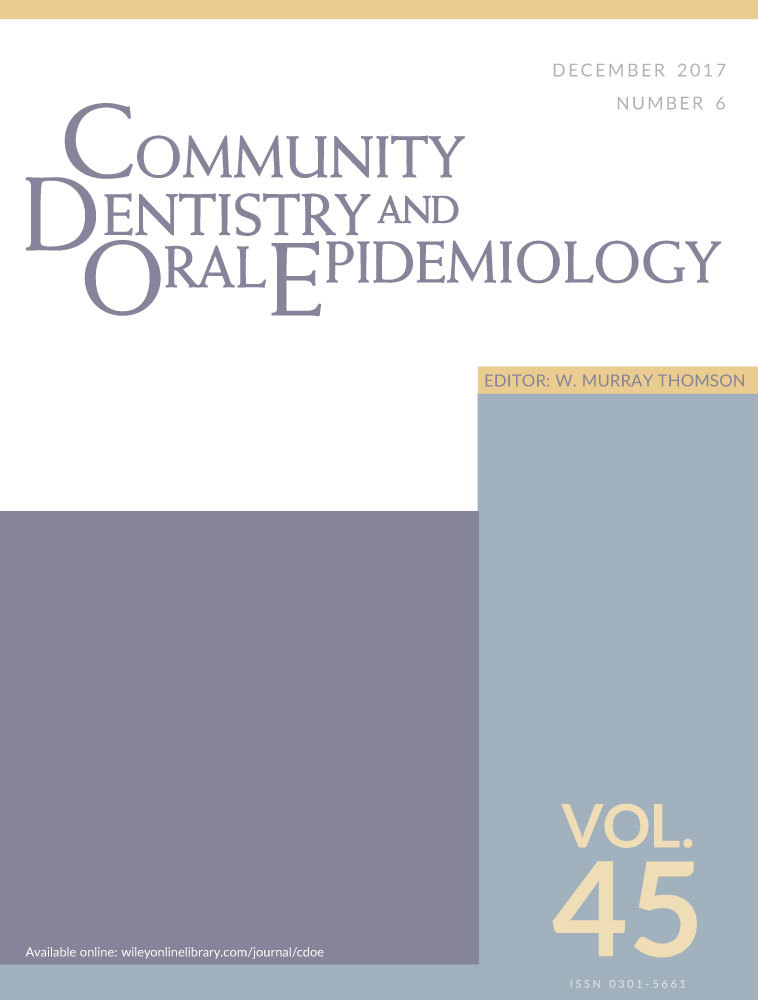Dental caries clusters among adolescents
Abstract
Objectives
There have been very few longitudinal studies of dental caries in adolescents, and little study of the caries risk factors in this age group. The purpose of this study was to describe different caries trajectories and associated risk factors among members of the Iowa Fluoride Study (IFS) cohort.
Methods
The IFS recruited a birth cohort from 1992 to 1995, and has gathered dietary, fluoride and behavioural data at least twice yearly since recruitment. Examinations for dental caries were completed when participants were ages 5, 9, 13 and 17 years. For this study, only participants with decayed and filled surface (DFS) caries data at ages 9, 13 and 17 were included (N=396). The individual DFS counts at age 13 and the DFS increment from 13 to 17 were used to identify distinct caries trajectories using Ward's hierarchical clustering algorithm. A number of multinomial logistic regression models were developed to predict trajectory membership, using longitudinal dietary, fluoride and demographic/behavioural data from 9 to 17 years. Model selection was based on the akaike information criterion (AIC).
Results
Several different trajectory schemes were considered, and a three-trajectory scheme—no DFS at age 17 (n=142), low DFS (n=145) and high DFS (n=109)—was chosen to balance sample sizes and interpretability. The model selection process resulted in use of an arithmetic average for dietary variables across the period from 9 to 17 years. The multinomial logistic regression model with the best fit included the variables maternal education level, 100% juice consumption, brushing frequency and sex. Other favoured models also included water and milk consumption and home water fluoride concentration. The high caries cluster was most consistently associated with lower maternal education level, lower 100% juice consumption, lower brushing frequency and being female.
Conclusions
The use of a clustering algorithm and use of Akaike's Information Criterion (AIC) to determine the best representation of the data were useful means in presenting longitudinal caries data. Findings suggest that high caries incidence in adolescence is associated with lower maternal educational level, less frequent tooth brushing, lower 100% juice consumption and being female.




